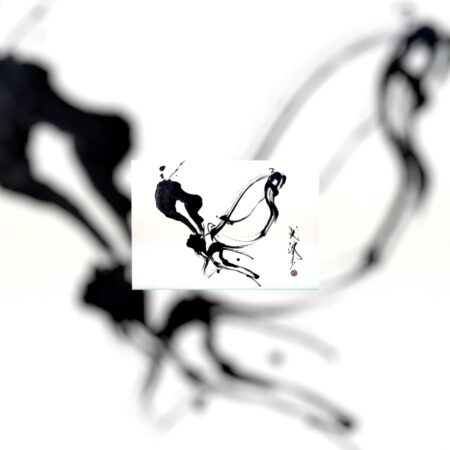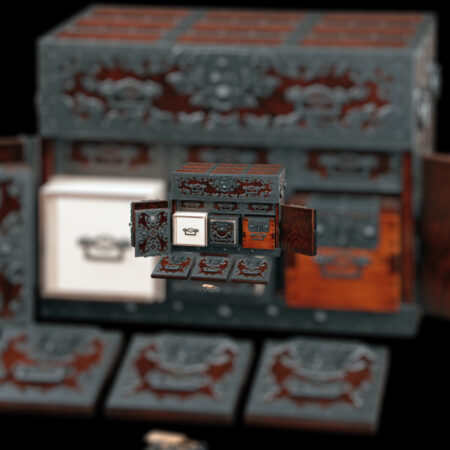The tea kettle plays a crucial role to create an elegant feel in the tearoom and in boiling water- an essential step in making tea. The tea kettle is an iron artwork capturing the distinctive worldview of Japanese culture called "wabi-sabi” ( "imperfect, impermanent, and incomplete" in nature). The kettle is exceptional for its vision- its shape and design while the most distinctive feature is the use of wazuku, which is a processed ancient Japanese iron extracted from mountains. Tea kettles made of wazuku are rustproof and highly durable- their lifespan reaches 400 years. Above all, they take the taste of boiled water to new heights. This kettle projects the ancient "scaly pattern" of Japan in the various patterns on its inner side. The design of the handle (links) on both sides resembles waves of the ocean. The pattern thrived in the Momoyama period (30 years from 1573 to 1603, when the Edo shogunate was established) though lines were straight at that time. The artist aims to create kettles as the representation of new sensibilities. The more the tea kettle is used, the more its color changes expressing its dignified, sophisticated attitude.
Art
Always creating with a fresh sensibility.

Artist
A kettle that soothes the human spirit.
Nagano Arata
A third-generation tea ceremony kettle (chagama) maker. His grandfather was nationally designated as a Holder of Important Intangible Cultural Property (so-called Living National Treasure) for his achievement concerning chagama.
Nagano has revived the chagama production techniques using wazuku, iron smelted with a traditional Japanese method that once died out. People are soothed by the colors of his highly original and creative works, as well as the iron’s quality after the works age.
Inheriting traditional techniques while updating them on a daily basis, he continues to create works that lead to the future. Going beyond the framework of chagama, he has been creating modern art objects using wazuku in recent years as an artist.
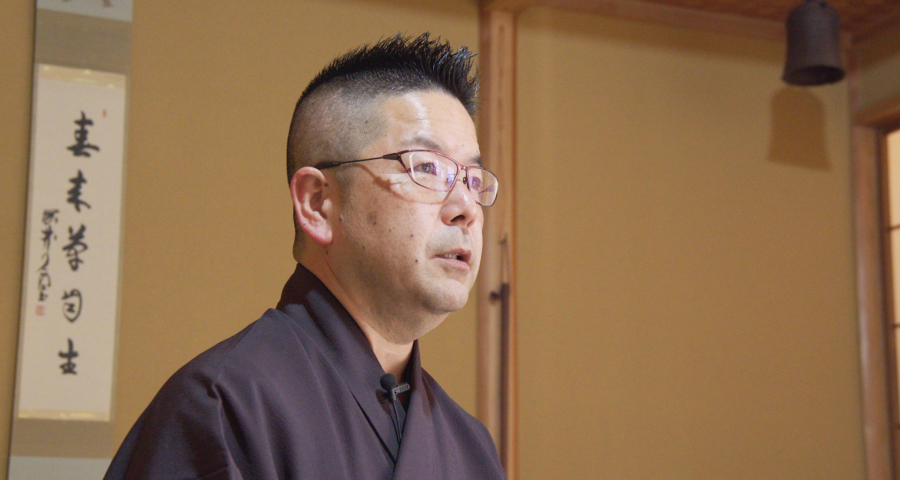
Art Style
Where thoughts and techniques overlap, reaching 100%.
Metalworking
Around the 14th century, tea ceremony kettles (chagama) were mainly produced in Tenmyo (current Sano City, Tochigi Prefecture) and Ashiya (current Ashiya Town, Fukuoka Prefecture). Chagama made with highly rust-resistant wazuku, iron smelted with a traditional Japanese method, are still loved today by many Japanese tea practitioners. Among the many tea ceremony tools, chagama holds a special position. Chagama’s charms are its formative beauty––such as the kettle’s form, lugs, and patterns––as well as its surface. The production of chagama requires a wide range of skills including welding skills and those for making molds. “You can create an 100% work when your passion for what you want to make and your skills for making that passion come true overlap,” Arata Nagano says. In addition to carrying on the tradition, he takes what he sees and feels, as well as landscapes and places that have had on impact on him, and turn them into images, which are projected onto his works.
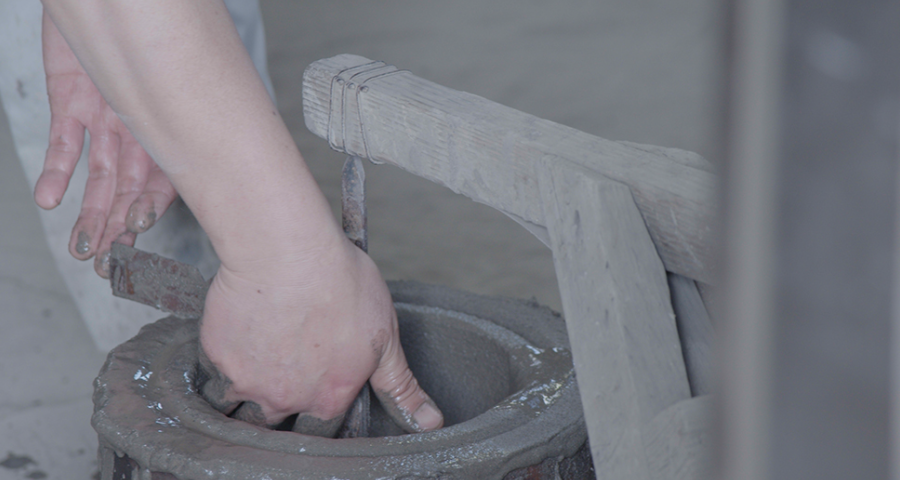
Roots
From Japanese pig iron to contemporary sculptural works.
Wazuku is iron bullion. Long ago, wazuku was produced by artisans called murage who smelted ironsand––which was collected by digging away sections of a mountain––using a furnace called tatara. Until iron ores began to be imported from foreign countries in the late Edo period (1603–1868), wazuku was used as the only iron available in the country.
In addition to tea ceremony kettles (chagama), swords, armors, guns, nails, hinges, metal fittings, and all other iron products were made with wazuku. As trade with foreign countries increased, iron made from imported iron ores, called yozuku, began to be used from the late 19th century and onward, leading to the disappearance of wazuku, which was unsuitable for mass production. Arata Nagano’s grandfather, Tesshi Nagano, studied old chagama from across Japan and published Chanoyugama Zenshu (literally translated as “The Complete Collection of Tea Ceremony Kettles”), which consisted of ten volumes. Recognizing this achievement, he was nationally designated as a Holder of Important Intangible Cultural Property (so-called Living National Treasure). After many years of effort, he revived the techniques for making traditional Japanese iron (wazuku), which had once died out. In 1972, Tesshi Nagano (Holder of Important Intangible Cultural Property) and Tesshi Nagano the Second opened Nagano Studio for making, studying, and selling chagama made with wazuku. As the family’s third generation, Arata Nagano has been creating chagama and modern art objects.
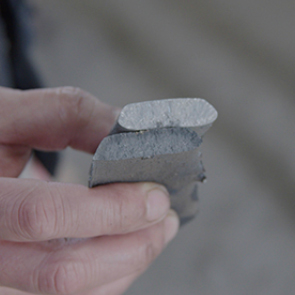
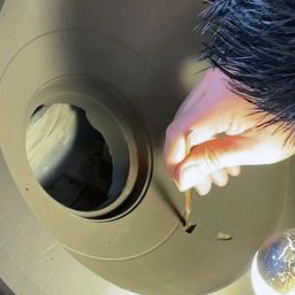
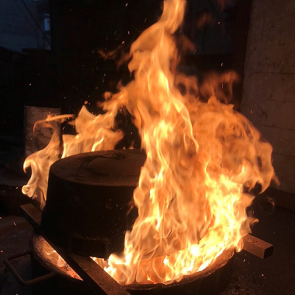
特集記事一覧
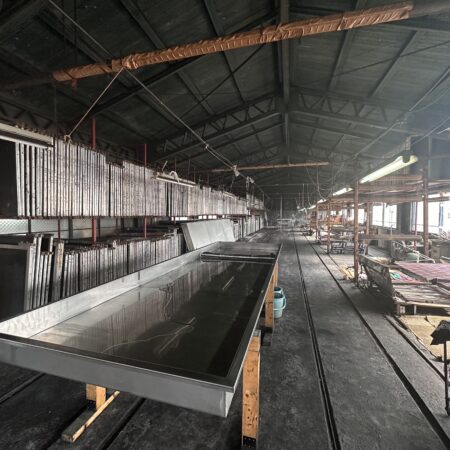
Connecting People and Tradition through Dyeing
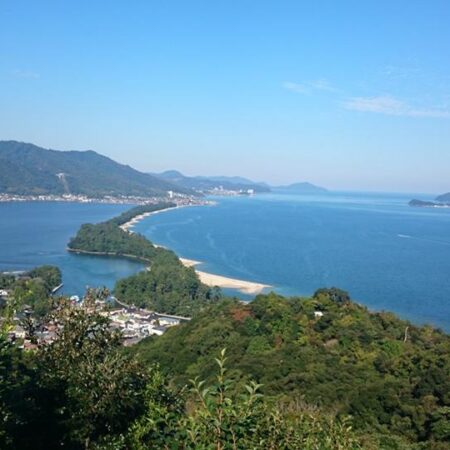
Exploring the Charms of Miyazu City, Kyoto Prefecture

A Hidden Gem of Otsuki City: Experience Guide to Enjoy with Mount Fuji

A Heartwarming Journey through a Treasure Trove of Nature and History

Experiencing History and Inherited Memories in Asuka Village

Discover! The Charm of Miki City
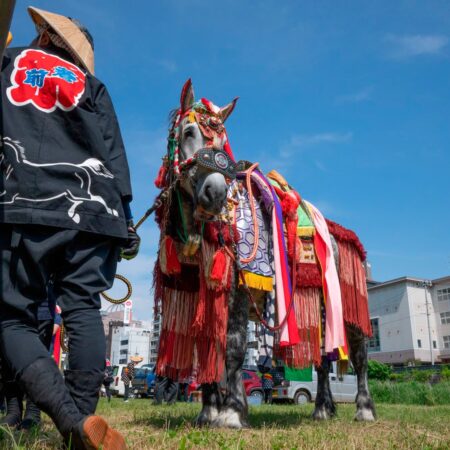
The Enchanting City of Morioka

Discovered! Exciting in Tokushima and Naruto City

